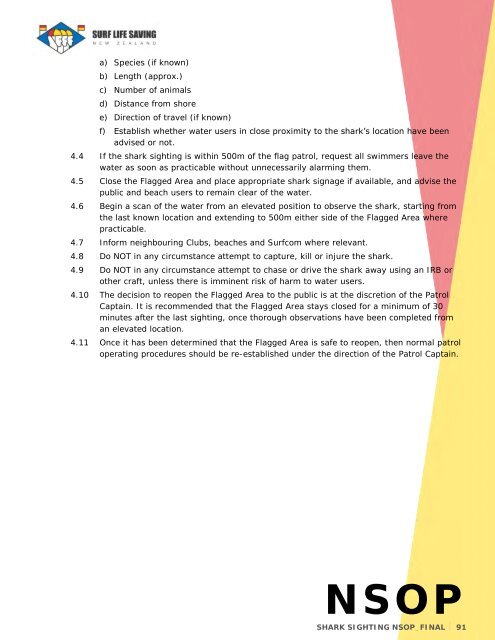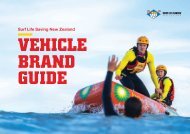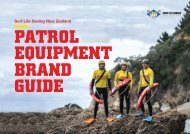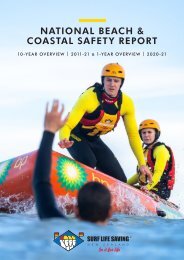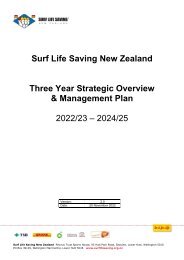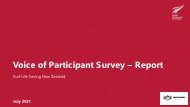National Standard Operating Procedures - Jul 2022
Full NSOP Manual
Full NSOP Manual
Create successful ePaper yourself
Turn your PDF publications into a flip-book with our unique Google optimized e-Paper software.
Critical Incident Response Procedure - NSOP<br />
Section 6 – Emergency Operations<br />
Version Number: 1.0<br />
Effective Date: 1 October 2021<br />
Review Date: 31 <strong>Jul</strong>y 2023<br />
Document Owner: <strong>National</strong> Lifesaving Manager<br />
1.0 PURPOSE<br />
To outline the critical incident response procedures that may take place after SLSNZ members are<br />
involved in a ‘critical incident’ during a surf lifesaving activity. In any critical incident response, the<br />
support and wellbeing of members is the priority.<br />
2.0 SCOPE<br />
The critical incident process is available to all SLSNZ members involved in a ‘critical incident’ during<br />
a surf lifesaving activity. Wellbeing support can be provided for incidents occurring outside of Surf<br />
Life Saving operations where surf lifesaving skills have been used off duty.<br />
3.0 REQUIREMENTS<br />
Required PPE<br />
Awards/Licenses<br />
Training<br />
Other<br />
Equipment<br />
N/A<br />
N/A<br />
Peer supporters will undergo Peer Support training<br />
N/A<br />
SLSNZ Peer Support Handbook<br />
4.0 INTRODUCTION<br />
What is a critical incident?<br />
A critical incident is an incident that is traumatic in nature or causes stress beyond normal<br />
operational duties. Examples of critical incidents include:<br />
• Death or body recovery<br />
• CPR<br />
• Attempted suicide<br />
• Life-threatening medical event<br />
• Assault or threatening behaviour to members<br />
• Patrol member in danger or major member injury<br />
• Or when requested<br />
NSOP<br />
CRITICAL INCIDENT PROCEDURE NSOP_FINAL 84


